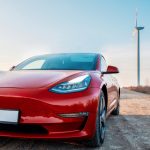With federal electric vehicle tax credits scheduled to expire by the end of Q3, Tesla is urging potential buyers to finalize orders and secure delivery before the September 31 deadline. Delivery timing rather than order placement will determine eligibility for the $7,500 federal tax credit on new vehicles and $4,000 on used EVs. Business analysts anticipate heightened consumer activity as customers and automakers alike respond to changing incentives within a narrowing timeframe. While Tesla has already announced a suite of incentives for its Model 3 and Model Y ahead of the credit’s sunset, the company has clarified that no further offers will be introduced this quarter. The automaker has also indicated it will begin reducing these incentives as inventory becomes scarce heading into the final months with the credit.
Discussion around the federal EV tax credit has persisted for several years, often linked with administrative changes and shifting policy debates. Tesla has previously seen its eligibility for similar credits alternate, affecting sales trends and pricing strategies. Earlier reports suggested continued incentives or potential legislative extensions might materialize, but the schedule for phasing out these credits now appears fixed. As the credit approaches its end, consumer urgency for EV purchases has become more noticeable, echoed by trends during past expirations of federal or state incentives for electric vehicles.
What Motivated Tesla’s Incentive Push?
Tesla aimed to drive Q3 sales by providing various incentives, including 0% APR financing, special lease terms, and complimentary upgrades on select inventory models. According to executives, these measures were intended to motivate buyers toward early purchases within the quarter. The company believes proactive incentives can offset the impact of expiring tax benefits while managing order lead times and vehicle inventory.
How Does the Phase-Out Affect Delivery Timing?
Only vehicles delivered before September 31 will qualify for the expiring federal credits, regardless of when the order is placed. Tesla’s CFO, Vaibhav Taneja, stated,
“Given the abrupt change, we have a limited supply of vehicles in the US this quarter. As we are already within lead times to order parts for cars, we have rolled out all our planned incentives already and will start pairing them back as we start to sell.”
This approach ensures customers who act promptly have the best chance at receiving both the incentive and their preferred vehicle. Taneja further advised,
“If you are in the US and looking to buy a car, let’s roll now as we may not be able to guarantee delivery for orders placed in the later part of August and beyond.”
Are Product Strategies Changing in Response?
Tesla announced intentions to introduce more affordable electric models in the upcoming fourth quarter, following the conclusion of current major incentives. The automaker suggested delaying these launches avoids cannibalizing demand for existing products, especially with the Model 3 and Model Y still central to Tesla’s sales targets. Other automakers are reported to be examining similar strategies to sustain market share as tax credits phase out for the sector as a whole.
Careful planning around model rollout and incentive timing has become increasingly important for both Tesla and its competitors as government subsidies wind down. Consumers seeking EVs from Tesla face a narrowing window to maximize savings, while the brand works to balance demand and inventory constraints. Those considering a Tesla purchase should evaluate not just the current price and incentives, but also the likelihood of timely delivery and how future model introductions may shift pricing structures. Beyond Tesla, the entire EV marketplace is recalibrating to a landscape less dependent on direct federal support, which may result in new pricing tactics and promotional offers industry-wide.










